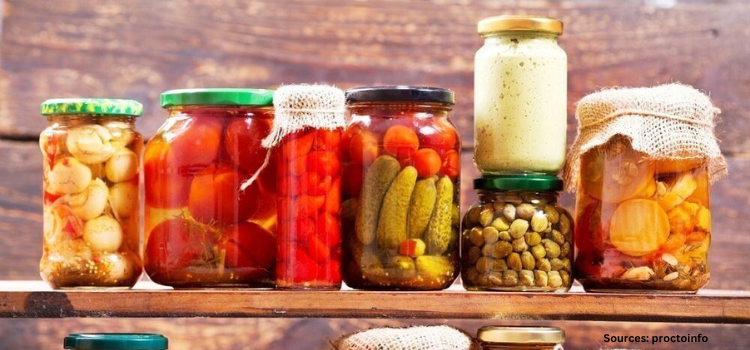
Pea Protein Market by Nature (Conventional and Organic), by Product (Isolates, Concentrates, and Textured Pea Protein, Hydrolyzed Protein, and Others), by Source (Yellow Split Pea, Lentils, and Chickpea), by Form (Dry and Liquid), and by Application (Animal Feed, Food Processing, Nutraceuticals, Sports Nutrition, Infant Nutrition, Personal Care and Cosmetics, Food and Beverages, and Supplements) - Global Opportunity Analysis and Industry Forecast, 2024–2030
US Tariff Impact on Pea Protein Market
Trump Tariffs Are Reshaping Global Business
Market Definition
The global Pea Protein Market size was valued at USD 1.54 billion in 2023, and is predicted to reach USD 3.43 billion by 2030, with a CAGR of 12.20% from 2024 to 2030. Pea protein is derived from the seeds of the leguminous plant known as Pisum sativum, commonly found in yellow and green split peas. It serves as a valuable food product, primarily utilized as a protein supplement. These seeds are naturally abundant in protein, with protein levels ranging from 23.1% to 30.9%, along with minimal fat. Peas also offer a wide array of essential nutrients, including vitamins, minerals, and other beneficial compounds.
Moreover, they house crucial amino acids necessary for a well-balanced human diet. This nutritional profile makes pea protein an attractive choice for boosting the protein content of smoothies and shakes. Additionally, it aligns perfectly with various dietary preferences, being both naturally vegan and hypoallergenic
Market Dynamics and Trends
The growing popularity of sports and fitness activities drives the demand for pea protein among athletes and fitness enthusiasts as a sports nutrition product. This is due to its effectiveness in promoting muscle growth and facilitating recovery, which, in turn, drives the growth of the market. According to a report published by the Sports & Fitness Industry Association (SFIA) of the U.S. in 2023, 77.6% of the country’s total population engaged in at least one sports activity in 2022, a 9.2% increase in real participation rates from 2017.
Moreover, rising awareness of the nutritional benefits of pea and pea-based products is increasing its demand across the world. This factor, in turn, drives the growth of the pea protein market. Consumers increasingly recognize pea protein's health advantages, such as its high-quality plant-based protein content and hypoallergenic properties. This heightened awareness has increased its adoption among various consumer segments, including vegans, vegetarians, and those with dietary restrictions.
In addition, the increasing demand for gluten-free food products, driven by celiac disease and gluten sensitivity among consumers, is boosting the adoption of pea protein. Pea protein's natural gluten-free properties cater to the preferences of consumers seeking alternatives to gluten-containing ingredients. This increased adoption, in turn, is driving the growth of the pea protein market.
However, low consumer awareness about pea protein-based products and the low supply of raw materials are restraining the pea protein market growth. On the contrary, technological advancements in protein extraction, such as dry milling that involves grinding through particle-on-particle contact to reduce the material size and wet milling that entails grinding peas soaked in liquid are expected to create lucrative growth opportunities for the market players in the future.
Market Segmentation and Scope of Study
The global pea protein market share is segmented on the basis of nature, product, source, form, application, and geography. Based on nature, the market is divided into conventional and organic. Based on product, the market is classified into isolates, concentrates, textured pea protein, hydrolyzed protein, and others. Based on the source, the market is categorized into yellow split peas, lentils, and chickpeas. Based on form, the market is divided into dry and liquid.
Based on application, the market is segmented into animal feed, food processing, nutraceuticals, sports nutrition, infant nutrition, personal care and cosmetics, food and beverages, and supplements. The geographical breakdown and analysis of each of the aforesaid segments includes regions, such as North America, Europe, Asia-Pacific, and the rest of the world (RoW).
Geographical Analysis
North America dominates the global pea protein market trends, and is potently expected to remain dominant in the industry. This can be attributed to several factors, including the growing number of individuals adopting vegan lifestyles and seeking health and wellness products.
Pea protein, being plant-based and a rich source of essential amino acids, aligns perfectly with vegan dietary preferences. As more people turn to veganism, a higher demand for plant-based protein sources such as pea protein, drives the market growth. According to the Plant Based Foods Association, the U.S. plant-based retail market is experiencing rapid growth at a rate five times more than that of the total food sales in the country.
Moreover, the presence of leading key players such as Kerry Group, Axiom Foods, and Ingredion, Inc. and regional players such as Burcon NutraScience is significantly boosting market growth in the region. For instance, in May 2023, Burcon NutraScience launched ingredient processing and scale-up services at its Winnipeg Technical Centre, which comprises 10,000 square feet of lab and pilot-scale production area. Also, it utilizes state-of-the-art commercial processing equipment for the entire product development cycle. This factor enhances Burcon NutraScience's market presence in the North American region.
On the other hand, Asia-Pacific shows a substantial growth in the global pea protein market, due to the widespread adoption of pea protein in countries such as China and India. These countries possess a significant vegetarian and flexitarian population that is embracing pea protein for its nutritional benefits and sustainability.
Moreover, governments across the Asia-Pacific region are actively promoting sustainable pea farming practices by implementing policies, subsidies, and research funding to incentivize farmers to cultivate peas. This, in turn, is driving the growth of the market. According to the data from Our World in Data, China is one of the top producers of green peas globally, with 1.47 million tons produced. It is followed by India with 1.1 million tons in 2021.
Competitive Landscape
The pea protein industry includes several market players, such as Roquette Frères, Ingredion, Inc., Kerry Group Plc., NOW Foods, Axiom Foods, Inc., Burcon NutraScience Corporation, Dupont de Nemours and Company, Archer Daniels Midland Company, Cargill, Inc., Shandong Jianyuan Foods Co., Ltd. These market players are adopting various strategies, such as product launches and partnerships to maintain their dominance in the global pea protein market.
For instance, in November 2022, Ingredion and InnovoPro signed an exclusive commercial distribution partnership to bring chickpea protein concentrate to the U.S. and Canada. This strategic partnership aims to enhance the availability of chickpea protein, addressing the growing consumer demand for plant-based products that seamlessly combine sustainability, nutrition, flavor, texture, and functionality within the North American market.
Moreover, in June 2022, Roquette launched a new organic range of texturized pea and fava proteins called NUTRALYS. The new range is available first in Europe, and aims to enhance Roquette's strong position in the protein market as a key leader for plant-based solutions. Moreover, this new range of textured vegetable protein is the first organic textured vegetable protein range offered by Roquette.
In addition, in April 2022, Cargill announced the launch of its existing pea protein product, RadiPure, in India and the META (Middle East, Turkey, and Africa) region. This expansion is strategically aligned with the rising interest in protein-rich plant-based food options within these territories. RadiPure can be utilized for various applications, including meat and dairy alternatives, bakery products, and snacks.
Key Benefits
-
The report provides quantitative analysis and estimations of the pea protein market from 2024 to 2030, which assists in identifying the prevailing market opportunities.
-
The study comprises a deep-dive analysis of the current and future pea protein market trends to depict prevalent investment pockets in the industry.
-
Information related to key drivers, restraints, and opportunities and their impact on the pea protein market is provided in the report.
-
Competitive analysis of the players, along with their market share is provided in the report.
-
SWOT analysis and a Porter's Five Forces model is elaborated on in the study.
-
Value chain analysis in the market study provides a clear picture of the stakeholders' roles.
Pea Protein Market Key Segments
By Nature
-
Conventional
-
Organic
By Product
-
Isolates Pea Protein
-
Concentrates Pea Protein
-
Textured Pea Protein
-
Hydrolyzed Protein
-
Others
By Source
-
Yellow Split Pea
-
Lentils
-
Chickpea
By Form
-
Dry
-
Liquid
By Application
-
Animal Feed
-
Nutraceuticals
-
Sports Nutrition
-
Infant Nutrition
-
Personal Care and Cosmetics
-
Food and Beverages
-
Supplements
By Region
-
North America
-
U.S
-
Canada
-
Mexico
-
-
Europe
-
UK
-
Germany
-
France
-
Italy
-
Spain
-
Denmark
-
Netherlands
-
Finland
-
Sweden
-
Norway
-
Russia
-
Rest of Europe
-
-
Asia-Pacific
-
China
-
Japan
-
India
-
South Korea
-
Australia
-
Indonesia
-
Singapore
-
Taiwan
-
Thailand
-
Rest of Asia-Pacific
-
-
RoW
-
Latin America
-
Middle East
-
Africa
-
Key Players
-
Roquette Freres
-
Ingredion, Inc.
-
Kerry Group plc.
-
NOW Foods
-
Axiom Foods, Inc.
-
Burcon NutraScience Corporation
-
Dupont de Nemours and Company
-
Archer Daniels Midland Company
-
Cargill, Inc.
-
Shandong Jianyuan Foods Co., Ltd.
REPORT SCOPE AND SEGMENTATION:
|
Parameters |
Details |
|
Market Size in 2023 |
USD 1.54 Billion |
|
Revenue Forecast in 2030 |
USD 3.43 Billion |
|
Growth Rate |
CAGR of 12.20% from 2024 to 2030 |
|
Analysis Period |
2023–2030 |
|
Base Year Considered |
2023 |
|
Forecast Period |
2024–2030 |
|
Market Size Estimation |
Billion (USD) |
|
Growth Factors |
Growing popularity of sports and fitness activities is driving the demand for pea protein among athletes and fitness enthusiasts as a sports nutrition. Increasing demand for gluten-free food products. |
|
Countries Covered |
28 |
|
Companies Profiled |
10 |
|
Market Share |
Available for 10 companies |
|
Customization Scope |
Free customization (equivalent up to 80 working hours of analysts) after purchase. Addition or alteration to country, regional, and segment scope. |
|
Pricing and Purchase Options |
Avail customized purchase options to meet your exact research needs. |

















 Speak to Our Analyst
Speak to Our Analyst





















